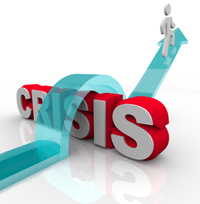Last updated: Jun. 26, 2013
 As our friends and family in Alberta continue down the long road to recovery from the floods, we thought it a good time to share some thoughts on business continuity and disaster preparedness. Ensure your small business is prepared to handle a disaster.
As our friends and family in Alberta continue down the long road to recovery from the floods, we thought it a good time to share some thoughts on business continuity and disaster preparedness. Ensure your small business is prepared to handle a disaster.
This article is a refresh on a piece that I wrote for Kashoo Online Accounting upon returning from Japan in the wake of the earthquake and tsunami disasters of March 2011.
Business continuity and disaster preparedness planning is as important in our business lives as it is in our personal lives.
When it comes to your business there’s more to consider than just an accident or natural disaster. What would you do if one or more of the following happened?
- Company supply chain was cut off
- Internet connection went down for a week
- Product caused harm
- Facility were damaged by fire
Here are some thoughts from my experience in Japan and observations from the ongoing situation in Alberta.
Business Continuity and Disaster Preparedness
Preventative Measures
Before a disaster strikes you have the opportunity to mitigate the harm done to your business.
- Identify the critical assets of your business and consider how you’d protect them.
If you operate out of a office or warehouse, the critical asset could be the location and an emergency could prevent access to your business causing you to lose sales. Buying business interruption insurance would be a way to protect yourself.
Perhaps, the critical asset could be the safety and security of customer data. Secure offsite data backups would safeguard this information.
- Build in redundancy.
One recommendation here is to create a buddy system. That is, you could set up a reciprocal access agreement with another small business whereby you would have access to one another’s offices during periods of disruption. This would give you redundant office space without the expense of a second lease.
- Practice a disaster recovery plan.
Creating a business continuity plan to bring your business back online once a disaster strikes is an important step in disaster preparedness.
Actually practicing the continuity plan is something often overlooked but is just as vital. Take a Saturday afternoon and run through what you would do in the case of different scenarios.
Here are a few suggestions to plan for:
- Your ISP (Internet Service Provider) goes down?
- You’re no longer able to contact your primary suppliers?
- A member of your staff is missing?
- Your physical office is no longer accessible?
- You can’t contact or communicate with customers through your typical means?
- Have emergency funds or access to alternative forms of payment.
In the aftermath of a disaster, it may not be business as usual. Networks may be down making normal methods of payment like credit card and debit impossible.
Should the Unthinkable Strike
- Remain calm.
In the best (or worst) of times, I have found my Japanese friends and colleagues to be level-headed and composed. This resulted in a clarity that makes for rational decision-making that isn’t clouded by emotions, or worse, panic.
- Do the right thing.
A disaster is a not a cue to be opportunistic; after the disasters in Japan, friends blacklisted organizations that they felt were gouging with opportunistically high prices.
At the other end of the scale, companies donating their time and services won goodwill. This will ensure your business continues and perhaps even brings in new business once things return to normal.
- Pitch in.
The outpouring of support in Calgary and area is nothing short of remarkable. Thousands of volunteers showed up at McMahon Stadium last week to help in the clean up effort. And, this is just one of many examples of citizens pitching in to help complete strangers.
Getting Back on Your Feet
- Enact your disaster preparedness plan.
In the moments following a disaster, start putting your disaster recovery plan into action.
- Take advantage of government programs and assistance.
All Canadians have access to taxpayer relief measures if you miss a filing deadline due to a natural disaster.
CRA (Canada Revenue Agency) has confirmed that taxpayer relief provisions will be available in regards to filing T2 corporate tax returns or any self-employed individual tax returns that were late due to the flood.
- Understand and comply with program requirements.
It’s important that, if you’ve been hit by a disaster that you understand any available assistance programs and the specific requirements to apply for each.
- Develop a budget for disaster relief funds.
Take some time to consider what funds you’ll be receiving and decide the most effective and efficient use of the funds available.
In regards to the Alberta floods, both the federal government and the provincial government will be providing financial support, including a $1-billion preliminary emergency fund.
Having your business continuity and disaster preparedness plan in place will ensure you’re ready for any unforeseen events and you can come through with minimal impact to your small business.
Contact FBC if you’d like assistance with the financial aspects of recovering from and disaster or applying for government assistance programs, such as AgriStability.
